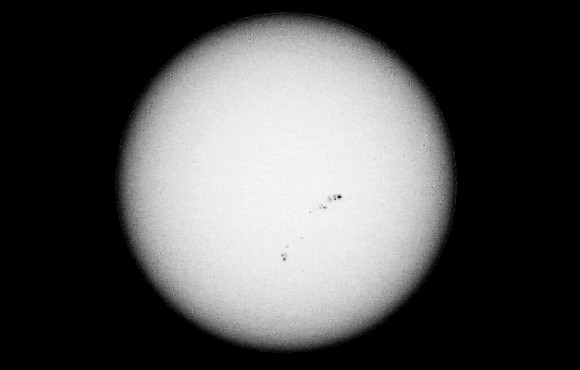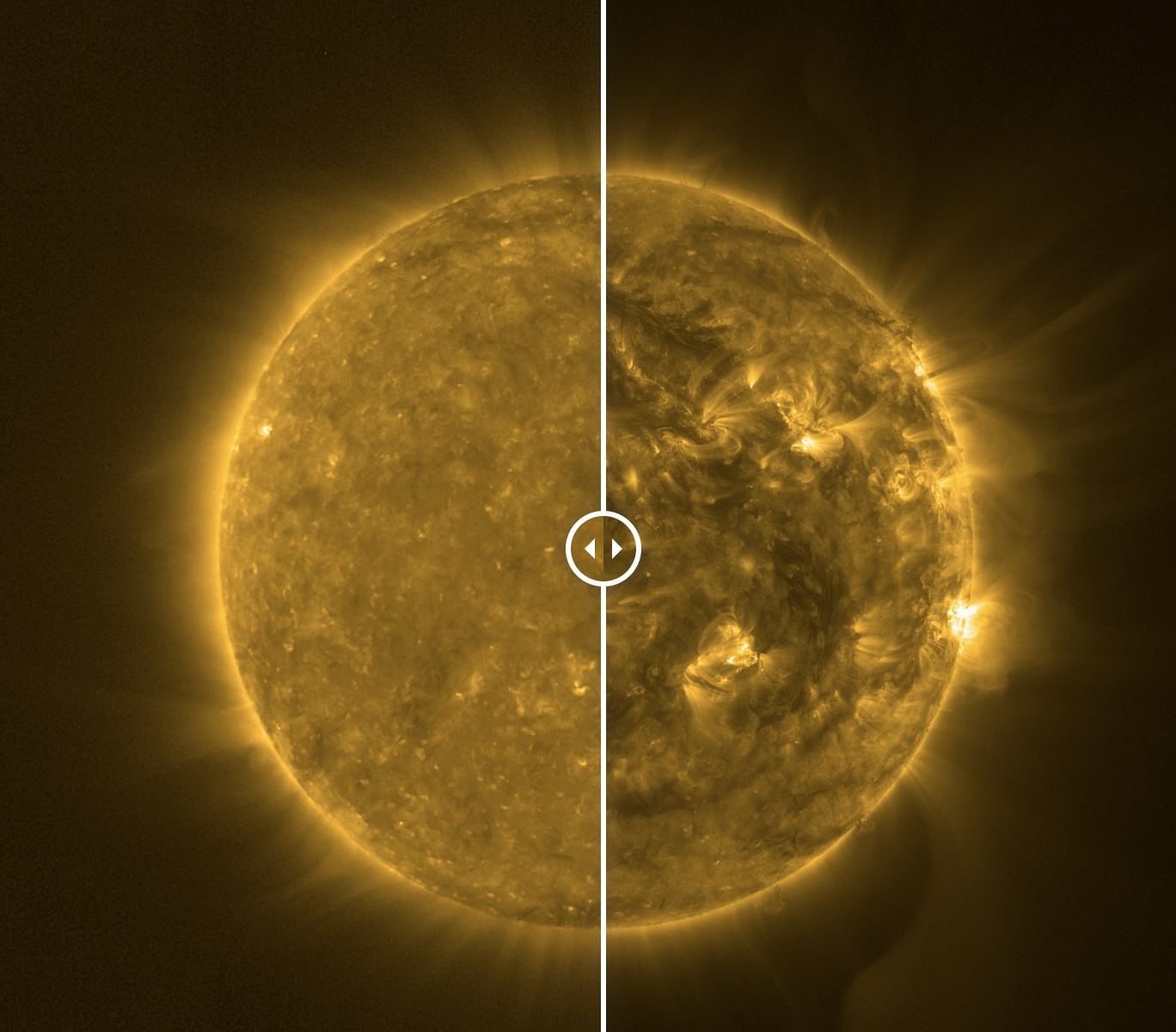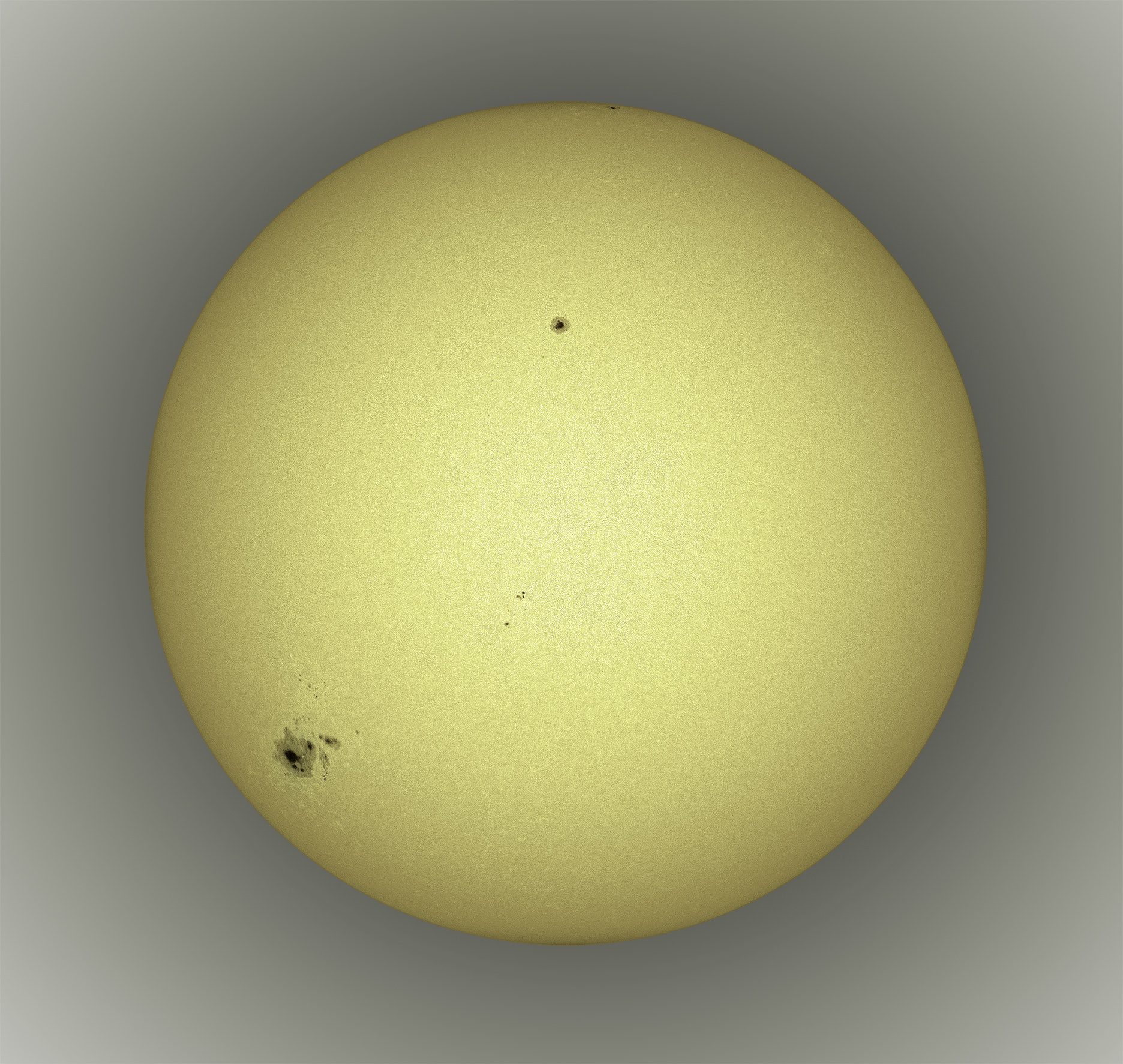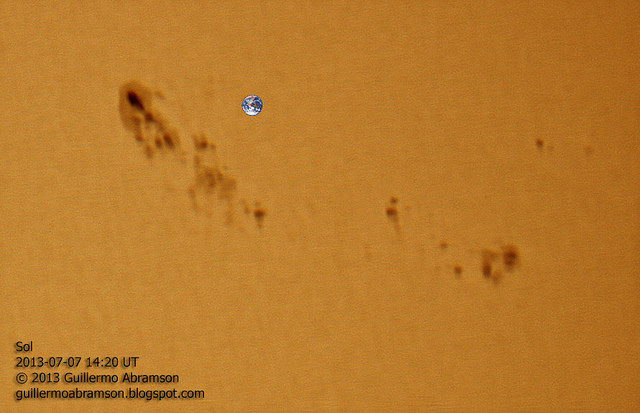The Sun has been vying for attention these last couple of weeks. First with the appearance of a fabulous complex sunspot region and then with a plethora of solar flares. On the 14th May, yet another was released, this time an X8.7 class flare from the same complex sunspot regions. It was significantly more powerful than the flare that set off the aurora displays which enchanted much of the planet but alas it was not pointing toward the Earth ( 🙁 sad emoji face.) Even though it was not directed at us, it could still disrupt communications and electronics but is a reminder that the Sun, whilst is on its way to solar maximum still has lots to give.
Continue reading “The Sun Hurls its Most Powerful Flare in a Decades”The Sun Gets Feisty, Throwing Off Three X-Class Flares Within 24 Hours
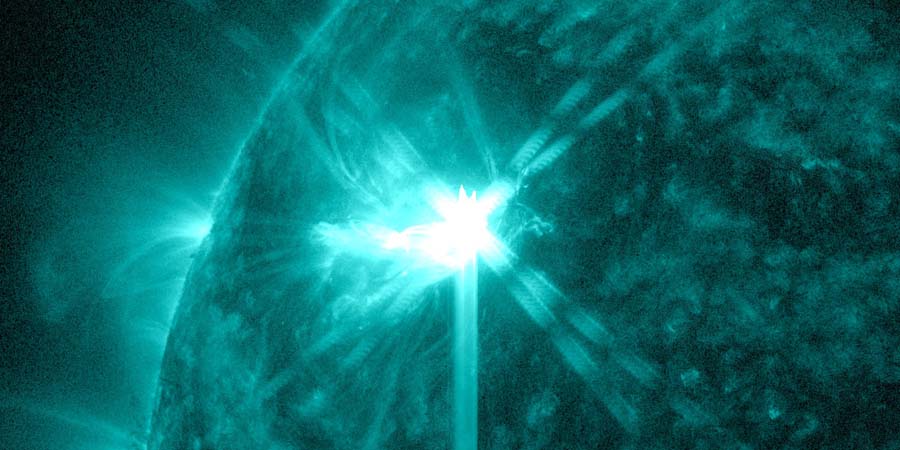
The Sun is heading toward solar maximum (which is likely to be about a year away) and as it does, there will be more sunspots, solar flares and coronal mass ejections. Over the last 24 hours there has been three, yes three X-class flares, the first peaking at X1.9, the second 1.7 and the final one a mighty 6.3. Flares of this magnitude caused radio blackouts, disruption to mobile phones and radio transmissions.
Continue reading “The Sun Gets Feisty, Throwing Off Three X-Class Flares Within 24 Hours”Look at How Much the Sun Has Changed in Just Two Years
The solar cycle has been reasonably well understood since 1843 when Samuel Schwabe spent 17 years observing the variation of sunspots. Since then, we have regularly observed the ebb and flow of the sunspots cycle every 11 years. More recently ESA’s Solar Orbiter has taken regular images of the Sun to track the progress as we head towards the peak of the current solar cycle. Two recently released images from February 2021 and October 2023 show how things are really picking up as we head toward solar maximum.
Continue reading “Look at How Much the Sun Has Changed in Just Two Years”A Sunspot, Revealed in Incredible Detail by Europe’s Newly Upgraded GREGOR Telescope
I wear glasses for astigmatism. But, as a stargazer with a visual impediment, turns out I’m in good company. The GREGOR telescope, a solar telescope located at the Teide Observatory in the Canary Islands also suffered from an astigmatism that was recently corrected…to very stellar results.
Opened in 2012, GREGOR is part of a new generation of solar (Sun observing) telescopes. Before 2002, solar scopes were quite small in diameter; under one metre. The Sun is close, and VERY bright, so your telescope doesn’t need to be as wide as those used for deep-space imaging. GREGOR itself is 1.5m (compare that to some of the largest telescopes imaging distant faint objects like the Keck Observatory at 10m. But without the special filters/optics used by a solar scope, a regular telescope staring at the Sun would be destroyed by the Sun’s light). A telescope’s power is often related to its ability to magnify. But just like enlarging a low-resolution photo, the more you magnify, the fuzzier the image becomes (that’s why those scenes in crime shows where they yell ‘enhance!’ and a photo grows to reveal a criminal are not realistic). Ultimately, a telescope’s diameter provides the higher resolution photo. GREGOR is designed to take those high-resolution images of our local Star. How high resolution? Imagine being able to distinguish a 50km wide feature on the Sun from 140 million km away – basically the same as being able to read the text on a coin from a kilometre away.
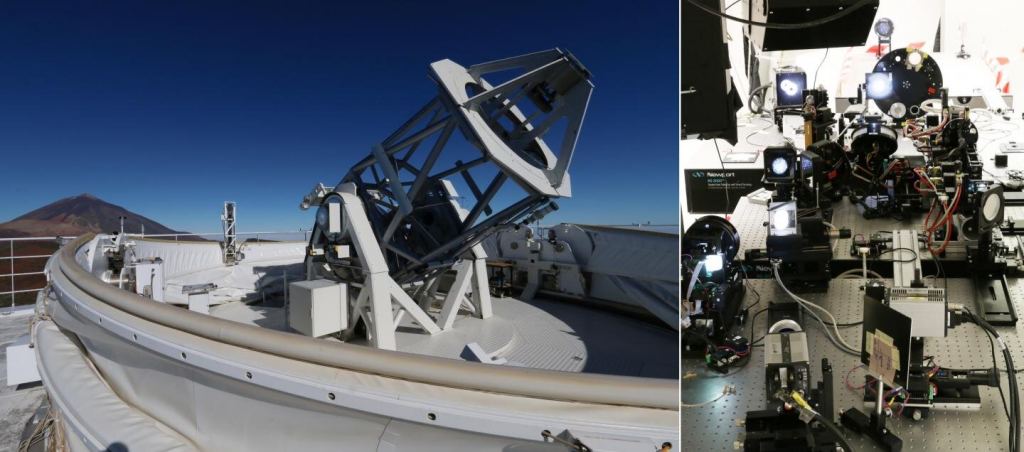
Curiosity Rover Snaps Photos of Comet Siding Spring, Giant Sunspot and Mars-shine
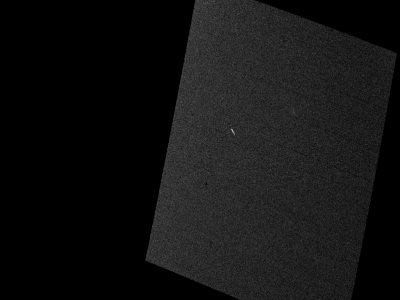
NASA’s Curiosity Rover spends most of its time staring at the ground, but like humans, it looks up once in a while too. As reported earlier, NASA ground controllers pointed the rover’s Mast Camera (mastcam) skyward to shoot a series of photos of Comet Siding Spring when it passed closest to the Red Planet on October 19th. Until recently, noise-speckled pictures available on the raw image site confounded interpretation. Was the comet there or wasn’t it? In these recently released versions, the fuzzy intruder is plain to see, tracking from right to left across the field of view.
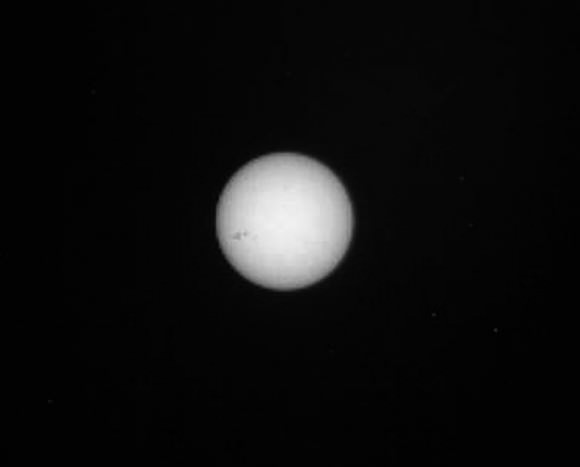
Ten exposures of 25 seconds each were taken between 4:33 p.m. and 5:54 p.m. CDT on October 19th to create the animation. The few specks you see are electronic noise, but the sharp, bright streaks are stars that trailed during the time exposure. Curiosity’s Mastcam camera system has dual lenses – a 100mm f/10 lens with a 5.1° square field of view and a 34mm, f/8 lens with a 15° square field of view. NASA didn’t include the information about which camera was used to make the photos, but if I had to guess, the faster, wide-angle view would be my choice. Siding Spring was moving relatively quickly across the Martian sky at closest approach.
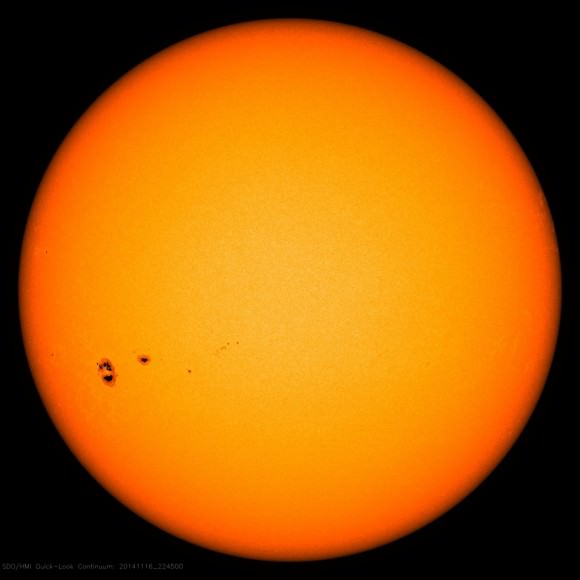
Prowling through the Curiosity raw image files, I came across this photo of the Sun on November 10th. Three dark spots at the left are immediately obvious and a dead-ringer for Active Region 2192, now re-named 2209 as it rounds the Sun for Act II. You’ll recall this was the sunspot group that nearly stole the show during the October 23rd partial solar eclipse. From Mars’ perspective, which currently allows Curiosity to see further around the solar “backside”, AR 2209 showed up a few days before it was visible from Earth.
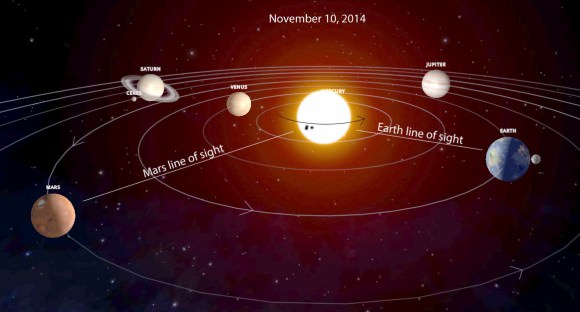
Although it’s slimmed down in size, the region is still large enough to view with the naked eye through a safe solar filter. More importantly, it possesses a complex beta-gamma-delta magnetic field where magnetic north and south poles are in close proximity and ripe for reconnection and production of M-class and X-class flares. Already, the region’s crackled with three moderate M-class flares over the past two days. In no mood to take a back seat, AR 2209 continues to dominate solar activity even during round two.
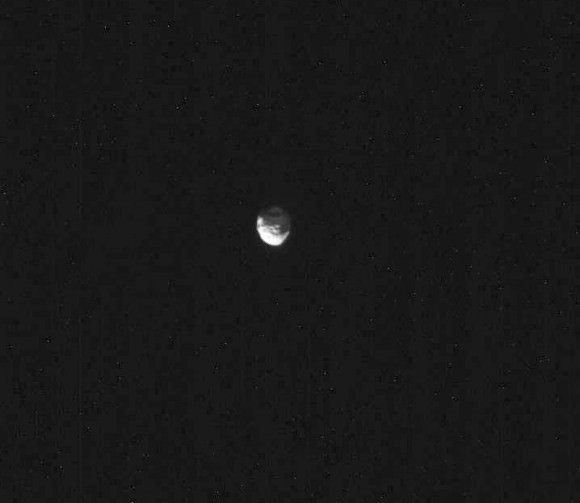
Mars possesses two small moons, Deimos and Phobos. Curiosity has photographed them both before including an occultation Deimos (9 miles/15 km) by the larger Phobos (13.5 miles/22 km). Phobos orbits closer to Mars than any other moon does to its primary in the Solar System, just 3,700 miles (6,000 km). As a result, it moves too fast for Mars’ rotation to overtake it the way Earth’s rotation overtakes the slower-moving Moon, causing it to set in the west overnight. Contrarian Phobos rises in the western sky and sets in the east just 4 hours 15 minutes later. When nearest the horizon and farthest from an observer, it’s apparent size is just 0.14º. At the zenith it grows to 0.20º of 1/3 the diameter of the Moon.
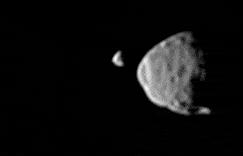
One longish observing session on the planet would cover a complete rise-set cycle during which Phobos would first appear as a crescent and finish up a full moon a few hours later. All this talk about Phobos is only meant to direct you to the picture above taken by Curiosity on October 20, 2014 when the moon was a thick crescent. As on Earth, where Earthshine fills out the remainder of the crescent Moon, so too does Mars-shine provide enough illumination to see the full outline of Phobos.
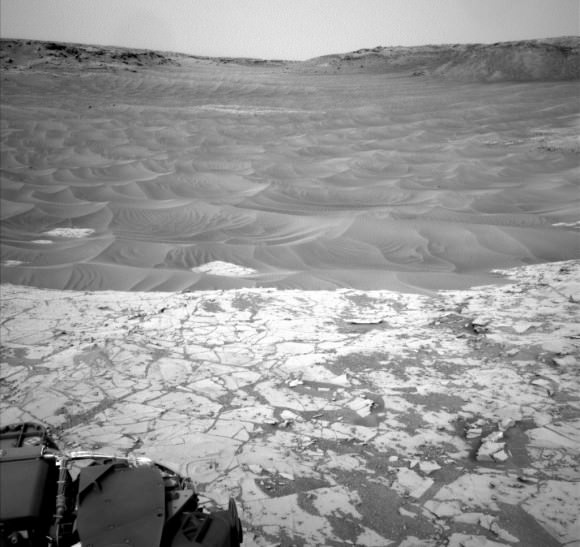
Curiosity has also photographed Earth, sunsets and transits of Phobos across the Sun while rambling across the dusty red landscape since August 2012. Before we depart, it seems only fair to aim our gaze Mars-ward again to see what’s up. Or down. The rover’s been doing a geological “Walkabout” in the Pahrump Hills outcrop at the base of Mt. Sharp in Gale Crater since September. Earlier this fall it drilled and sampled rock there containing more hematite than at any of its previous stops. Hematite is an iron oxide that’s often associated with water.
The mission may spend weeks or months at the outcrop looking for and drilling new target rocks before moving further up the geological layer cake better known as Mt. Sharp.
Beastly Sunspot Amazes, Heightens Eclipse Excitement
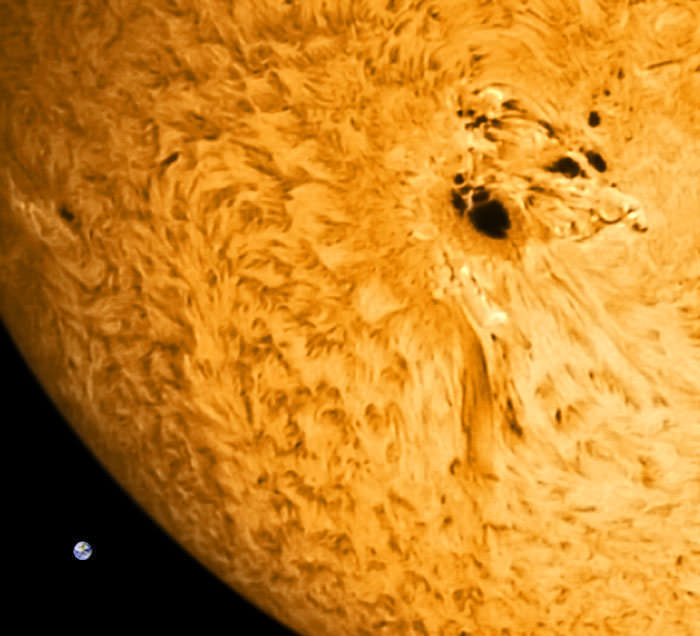
That’s one big, black blemish on the Sun today! Rarely have we been witness to such an enormous sunspot. Lifting the #14 welder’s glass to my eyes this morning I about jumped back and bumped into the garage.
Properly shielded, it was very easy to see with the naked eye. Unlike some other naked eye sunspots, this one showed structure. The eastern end was darker, the western half grayer and more extended.
Watch the giant spot rotate into view and grow right before your eyes in this 72-hour time-lapse video taken by SOHO’s HMI imager Oct. 18-20, 2014
Through a small telescope, the mix of dark umbras scattered amid weirdly sculpted penumbral “islands” was incredible to see. Photographs like the one above are wonderful documents, but witnessing this beautiful complex magnetic mess with your own eyes is another experience altogether. Region 2192 continues to grow and size and complexity and is now the largest sunspot group of solar cycle 24 which began in 2009 – more than five years ago!
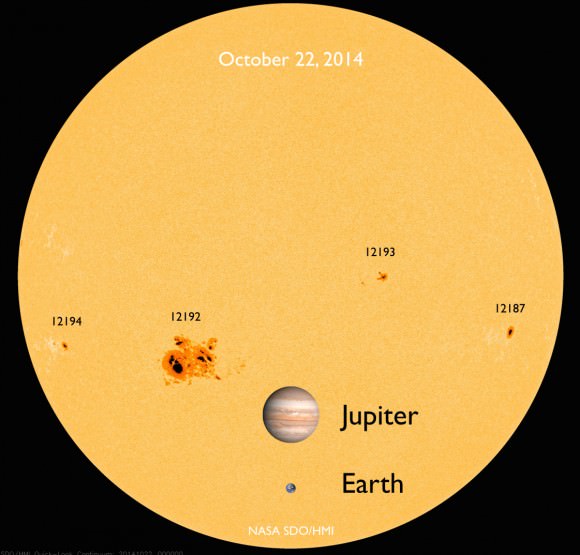
Every sunspot marks a region on the Sun’s shiny outer skin called the photosphere where magnetic energy is concentrated. Strong magnetic fields within a sunspot group quell the turbulent churning of the photosphere, chilling the region by several thousand degrees. Sunspots appear dark against the Sun’s blazing disk because they’re cooler. Cooler meaning 8,000 F instead of 11,000 F, so yes, they’re still VERY hot.
Watch as Region 2192 crackles with energy and flares as seen in far ultraviolet light with NASA’s Solar Dynamics Observatory.
Energy stored in sunspots’ twisted magnetic fields can suddenly be released in violent, explosions called solar flares. Billions of tons of solar plasma – the sizzling mix of protons and electrons that composes the Sun – are heated to millions of degrees during the explosion and rapidly accelerated into space. Radiation from radio waves to X-rays and gamma rays fans out at the speed of light. Fortunately for us, our atmosphere and planetary magnetic field protect us from most of what flares can fling our way.
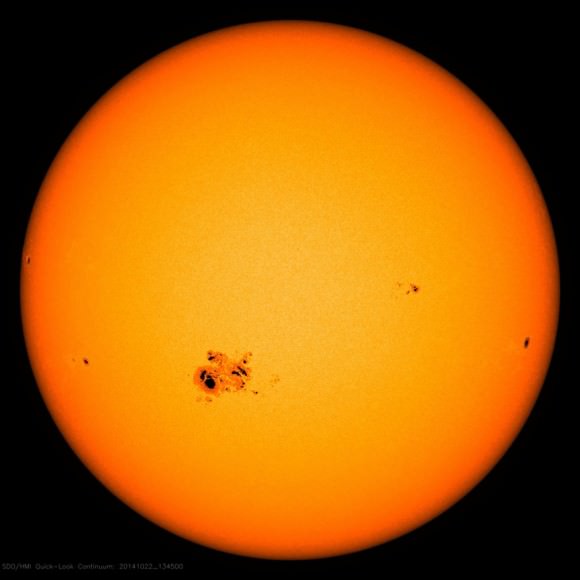
But as the Sun rotates this monster into our line of sight, possibilities for Earth-directed flares and coronal mass ejections increase as do geomagnetic storms, the bringer of auroras. Already in the past 48 hours, the spot has dished out seven M-class flares and a powerful X-1 flare even before it has fully come into view. There’s more to come – Region 2192 harbors an unstable beta-gamma-delta magnetic field ripe for additional flaring including more of the X-class variety.
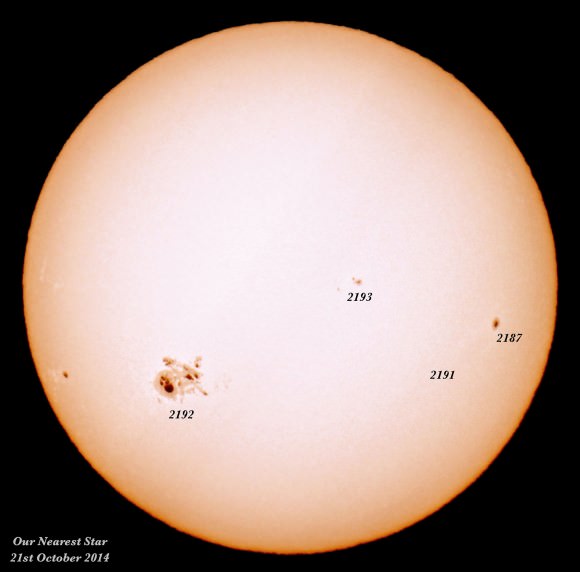
There’s no doubt now that this behemoth will stick around to add a whole new dimension to tomorrow’s partial solar eclipse. I can’t wait to see the Moon’s black curve approach and at least partially occult the group from view. If you’re interested in getting some one-of-a-kind pictures of the scene, please see our own Dave Dickinson’s excellent guide on photographing the partial eclipse.
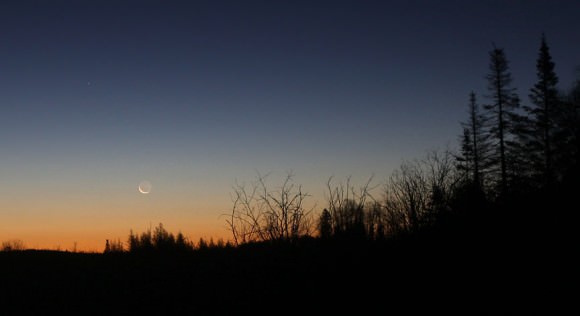
While we’re on the Moon, early morning risers had the pleasure of its company just one day before New Moon and solar eclipse. I was out watching the Orionid meteor shower. While not rich like the Perseids or Geminids I managed to catch a few including a few lucky shots with the camera.
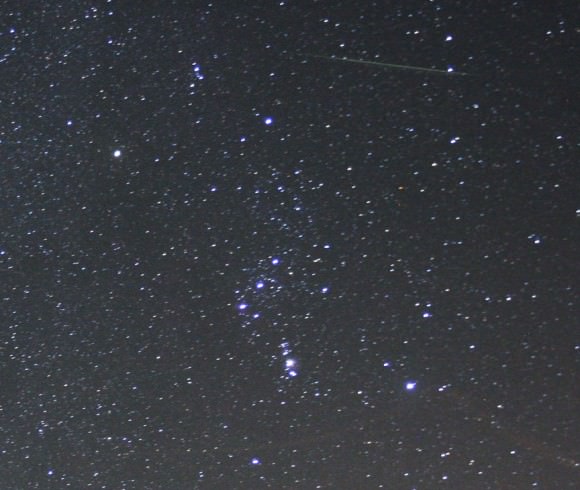
The shower has peaked but will still be active the remainder of the week if you’re inclined to take a look. And I can’t resist. How about one last sweet close-up photo of sunspot group 2192? I have a feeling you won’t mind.
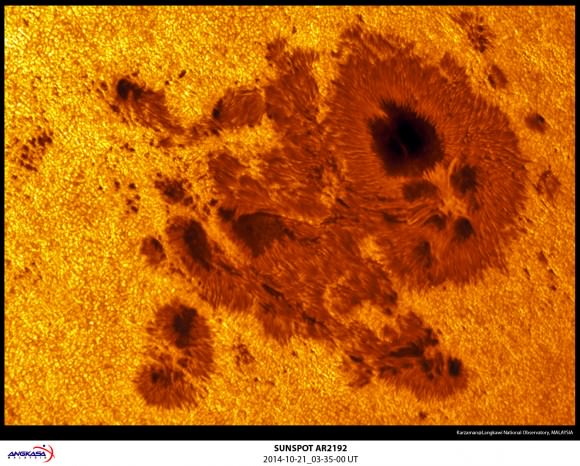
Awesome Photo Shows Monster Sunspot Aiming Our Way
It’s a-comin’: a “monster” sunspot is steadily rotating around the Sun’s southern hemisphere and will soon be in position to fire flares and CMEs in our direction — and this past weekend master solar photographer Alan Friedman captured it on camera!
The image above was taken in full-spectrum visible light on Sunday, Oct. 19 by Alan from his backyard in Buffalo, New York. Sunspots 2186 (at the top limb), 2187 (upper center), 2193 (the small middle cluster) and the enormous AR2192 are easily visible as dark blotches – “cooler” regions on the Sun’s surface where upwelling magnetic fields interrupt the convective processes that drive the Sun’s energy output.
This particular image was a single frame of video, unlike some of Alan’s other photographs. According to Alan the air turbulence was particularly bad that day, shooting between the clouds, so only this one frame was usable. Click the image for full-scale “wow” factor.
(And if you think AR2192 looks scary in that image, check it out in CaK bands here!)
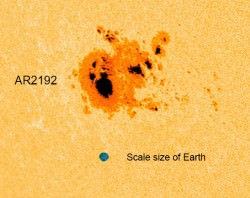
According to Spaceweather.com AR2192 has grown considerably over the past few days and has the potential to unleash M- and X-class flares in our direction now that it’s moving into Earth-facing position. It’s currently many times larger than Earth and will likely get even bigger… in fact, during this week’s partial solar eclipse AR2192 should be visible with the naked (but not unprotected!) eye for viewers across much of North America.
See more of Alan’s photography on his Averted Imagination site here (with prints available for purchase) and watch a TEDx presentation by Alan on how and why he does solar photography.
Image © Alan Friedman. Used with permission.
Aurora Watch! Two Solar Particle Blasts Could Start Smacking Into Earth Friday
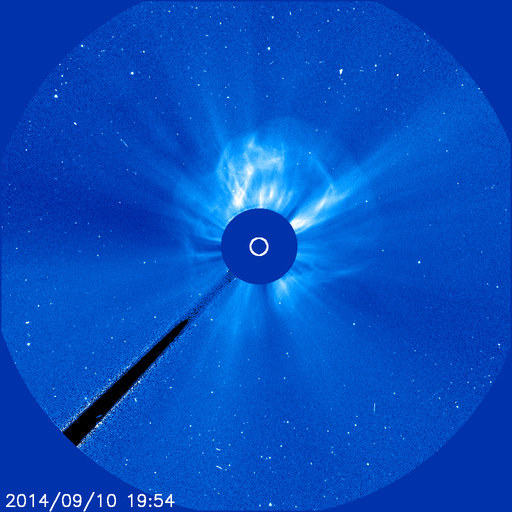
Bim, bam, smash! The Sun hurled two clouds of particles in our general direction, putting space weather watchers on alert. There’s now a high chance of auroras on Sept. 12 (Friday), according to the National Oceanic and Atmospheric Administration, with more activity possible during the weekend.
The coronal mass ejections erupted Sept. 9 and Sept. 10 from sunspot AR2158. The Sept. 10 flare packed the strongest class punch the sun has, an X-flare, which briefly caused HF radio blackouts on Earth. We have some amateur shots of the sunspot and Sun below.
“Radio emissions from shock waves at the leading edge of the CME suggest that the cloud tore through the sun’s atmosphere at speeds as high as 3,750 km/s [2,330 miles per second],” wrote SpaceWeather.com. “That would make this a very fast moving storm, and likely to reach Earth before the weekend. Auroras are definitely in the offing.”
Photographer John Chumack captured the Sun and AR2158 in these pictures from Monday (Sept. 8). If you’ve got some great Sun shots to share, be sure to put it on our Universe Today Flickr group!
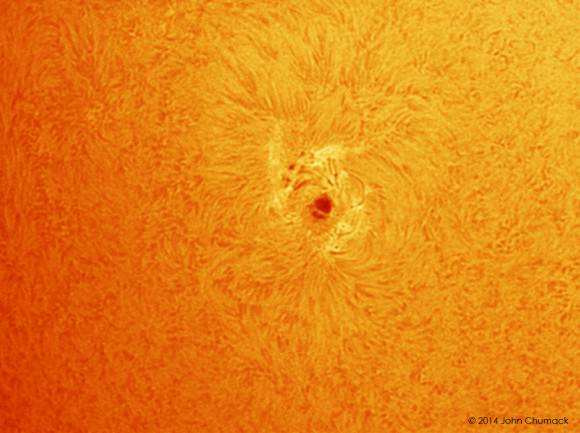
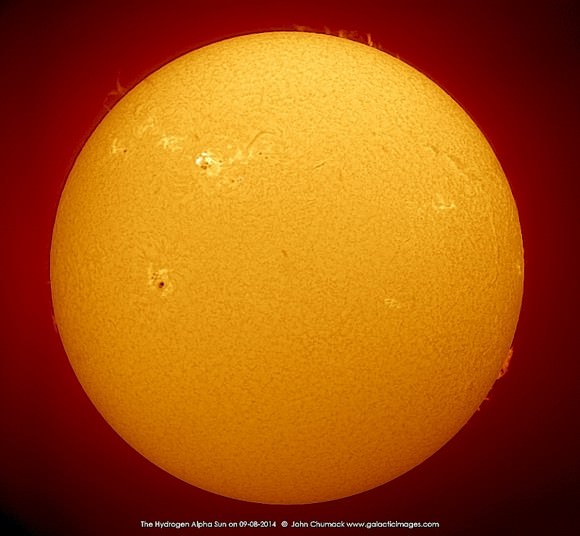
A Stunning Image of our Home Star
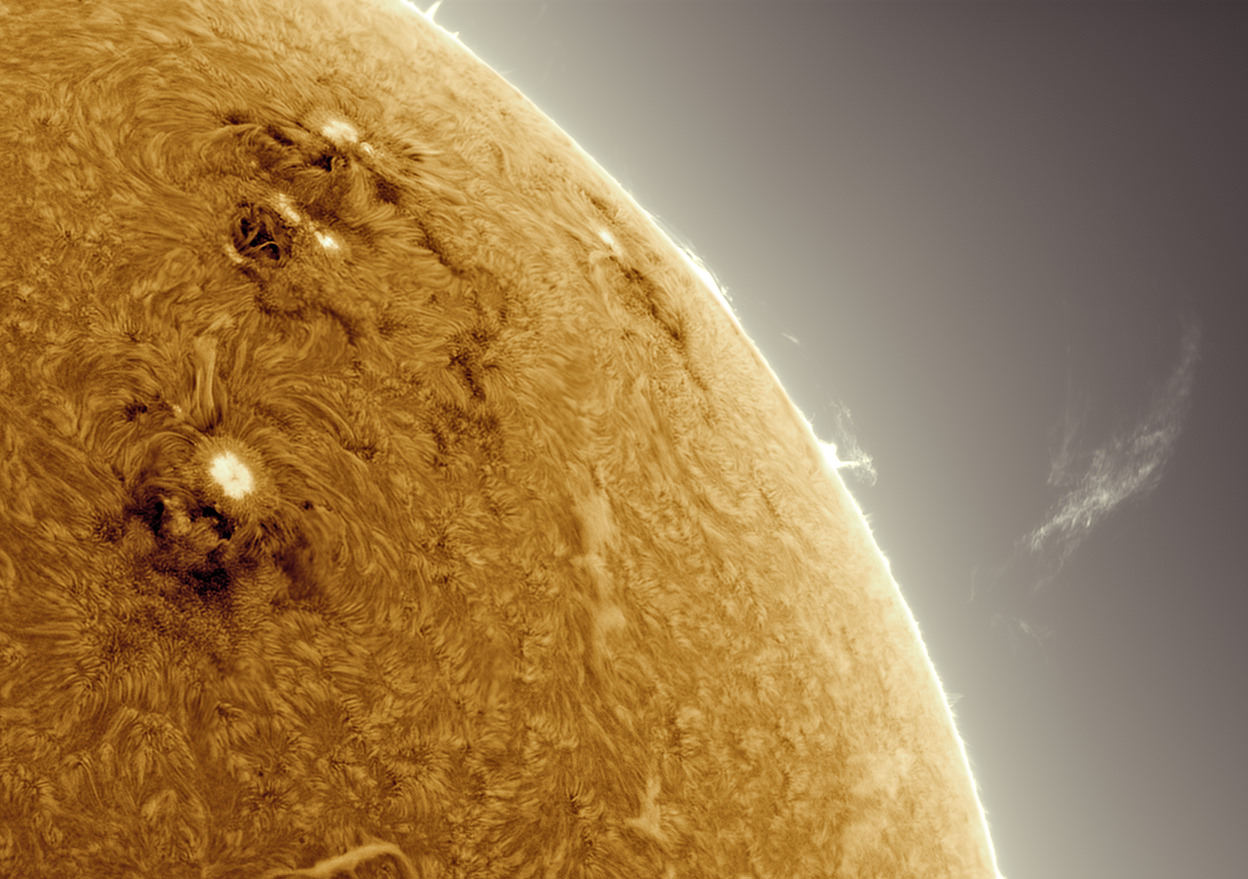
Active regions 2108 and 2109 are now passing around the limb of the Sun, but not before solar photography specialist Alan Friedman grabbed a few pictures of them on Friday! The image above, captured by Alan from his location in Buffalo, NY, shows the two large sunspots nestled in a forest of solar spicules while a large detached prominence hovers several Earth-diameters inside the corona. A beautiful snapshot of our home star!
Captured in hydrogen-alpha wavelengths, the image above has been colored by Alan, rotated 90 degrees counterclockwise, and inverted from the original. The sunspots and standing prominence are cooler in Ha than the surrounding chromosphere and corona, and so actually photograph darker.
A view of sunspot 2109 in visible light can be seen below:
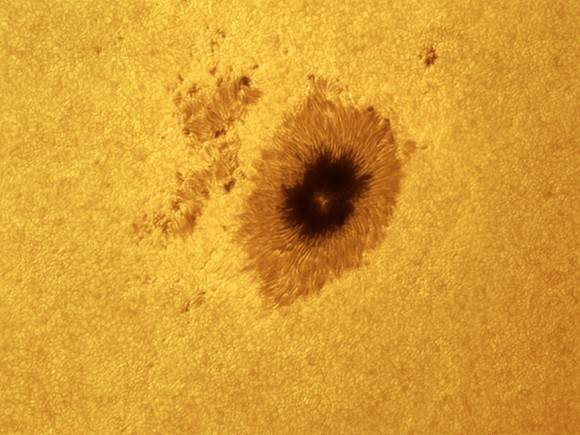
Sunspots are the result of magnetic fields rising up from deep within the Sun, preventing convection from occurring in large areas on the Sun’s surface and thereby creating relatively cooler regions we see as dark spots. They can often be many times the size of Earth and can be sources of powerful solar flares.
See these and more images by Alan on his blog here.
Images © Alan Friedman. All rights reserved.
These Are Really, Really Big Sunspots Facing Earth Right Now
Do you feel like you’re in the firing gallery? These sunspots are practically square-on to Earth right now. Although they haven’t shown much sign of erupting, if they did our planet would be right in the line of fire if a flare or stream of solar particles erupted.
These groups (known as 1785 and 1787) are so big that they are easily visible in amateur telescopes. 1785 alone is more than 11 Earth-diameters across, according to SpaceWeather.com! Just make sure you have the proper solar filters in place before you gaze at these dark smudges.
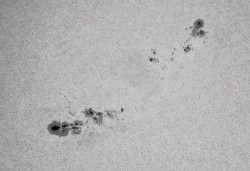
“Sunspots” — so called because they appear as dark smudges on the face of the sun — are areas of intense magnetic activity on the sun (thousands of times stronger than that of Earth’s magnetic field.)
At times, these regions can get so intense that the energy builds up and releases in the form of a flare and/or a coronal mass ejection — a burst of gas and magnetism that hurls solar material away from the sun.
If these flares hit the area of the Earth, a bunch of things can happen. Particles can flow along Earth’s magnetic lines and lead to the creation of aurora, or Northern/Southern lights. (Here’s an aurora that happened in June.) More severe storms can short out satellites or disable power lines.
“Could it be the calm before the storm?” SpaceWeather.com asked on its homepage, before giving forecasts of strong types of flares: “NOAA forecasters estimate a 55% chance of M-flares and a 10% chance of X-flares on July 8.”
The question has more pertinence given that 2013 is supposed to be the peak of the current 11-year sunspot cycle, but so far it’s been quieter than astronomers expected. Scientists are still trying to figure out how the cycle works.
We’ll keep our eyes peeled and let you know if something interesting happens. In the meantime, these pictures came from Universe Today readers, and we’d love to see your images, too! Feel free to add your snapshots to our Flickr page.
Update, 2:39 EDT: Among the pictures in our Flickr pool is this new stunner below from Ron Cottrell of Oro Valley, Arizona. “These sunspots are so magnificent that I get striking detail with my small 40mm Hydrogen-alpha telescope,” he wrote us.
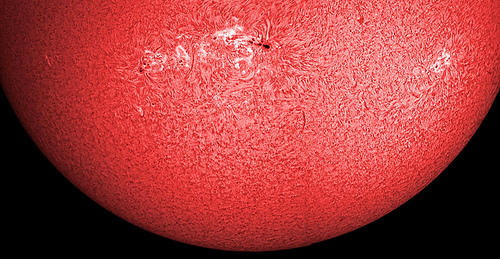
Update, 2:50 p.m. EDT: On Twitter, Daniel Fischer pointed out that the sunspot group is even visible using a simple camera and eclipse glasses.
